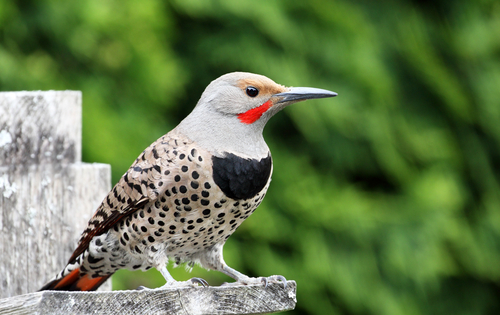Last updated on July 21st, 2023
Find out more about different states and their bird symbols and 50 Interesting facts about State Birds you might not know.
1. Alaska — Willow Ptarmigan
Willow Ptarmigan uses the art of camouflage to outwit their predators. Their feathers can be white, brownish-gold, or grayish, depending on the season.

2. Texas — Northern Mockingbird
Do not be fooled by the soft melody made by Northern Mockingbird. They will fight to protect their home just like true Texans.

3. California — California Quail
The male California quail will compete for and mate with one female. They also live as a community where all parent birds take care of the broods.

4. Montana — Western Meadowlark
Western Meadowlark have a beautiful sound and can sing up to 100 song variations.

5. New Mexico — Greater Roadrunner
Greater Roadrunners have mastered the skill of running and can run up to 1.5 miles per hour. They fly only to get away from danger.

6. Arizona — Cactus Wren
Cactus Wren is known for its loud call and the fact that they build their homes on cactus and use the spikes as their natural protection.

7. Nevada — Mountain Bluebird
There are some Native Americans that consider the feathers of these birds to be a sacred symbol due to their azure color.

8. Colorado — Lark Bunting
The birds are survivors since they can survive summer without water; they simply rely on getting moisture from insects that they feed on.

9. Wyoming — Western Meadowlark
One great fact about these birds is their low flute-like sound, and they also have a song with a distinct seven-note melody.

10. Oregon — Western Meadowlark
Do not underestimate the birds due to their low flute melodies. They can use their melody to alert all the birds around them in case of an intruder.
11. Idaho — Mountain Bluebird and Peregrine Falcon
The mountain bluebirds are small migratory birds and first to return after migration.

The Peregrine Falcon is an intense predator and one of the largest falcons.

12. Utah — California Gull
The California Gull saved early Utah pioneers by eating crickets that decimated their crops. So, as a way to appreciate the birds, Utahans made this bird their state symbol.

13. Kansas — Western meadowlark
Western meadowlarks have learned to live close to the ground to access insects and seeds easily.
14. Minnesota — Common Loon
Both the male and females take turns to incubate the eggs. They also live together when the eggs hatch until the young are strong enough to care for themselves.

15. Nebraska — Western Meadowlark
The birds are hunted by other larger birds and have learned to live and hide in lower grounds like grasslands to escape the prey birds.
16. South Dakota — Ring-necked Pheasant
The birds do not migrate or hibernate even during the winter. Instead, they thrive by staying active.

17. North Dakota — Western Meadowlark
It is the second most popular state bird because though it is small, it has strong survival instincts despite being hunted by the larger bird species.

18. Missouri — Eastern Bluebird
It is one of the few bird species not afraid of humans. As a result, you are likely to find them in backyards and birdhouses.

19. Oklahoma — Scissor-Tailed Flycatcher
When these birds are around, they give farmers peace of mind since they feed on insects that can be destructive to farms, like grasshoppers, wasps, and beetles.

20. Washington — American Goldfinch
It is a bird that is easy to spot since it is bright yellow. But it is not easy to catch it as the American Goldfinches can fly high through the sky.

21. Georgia — Brown Thrasher
It is a funny bird that mimics other bird species. But they do not joke about protecting their young. They are fiercely aggressive.

22. Michigan — American Robin
The male American Robin has the most beautiful tunes, and they enjoy showing it off. He is often the last bird heard when the sun sets.

23. Iowa — American Goldfinch
Though small in size, they are expert fliers. The bids will fly through the sky, searching for seeds.

24. Illinois — Northern Cardinal
These birds are easily recognizable, and they enjoy living around humans. So you are likely to spot them in backyards.

25. Wisconsin — American Robin
The birds enjoy getting tipsy occasionally. You will find them flocking to fermented berries. When drunk, they can even fall over when walking.

26. Florida — Northern Mockingbird
The bird’s last name is Mimus polyglottos which translates to Many-tough Mimic.

27. Arkansas — Northern Mockingbird
A single male can produce over 200 different songs.
28. Alabama — Northern Flicker
The birds are also known as Yellowhammers, a nickname given to Alabama soldiers during the Civil War.

29. North Carolina — Northern Cardinal
Unlike other birds, the Northern Cardinal sings all year round. Moreover, their females sing even when brooding.
30. New York — Eastern Bluebird
The birds are harbingers of spring since they are the first bird species to return after winter. Thus, they symbolize the start of warmer days.

. . . continue reading on the next page
